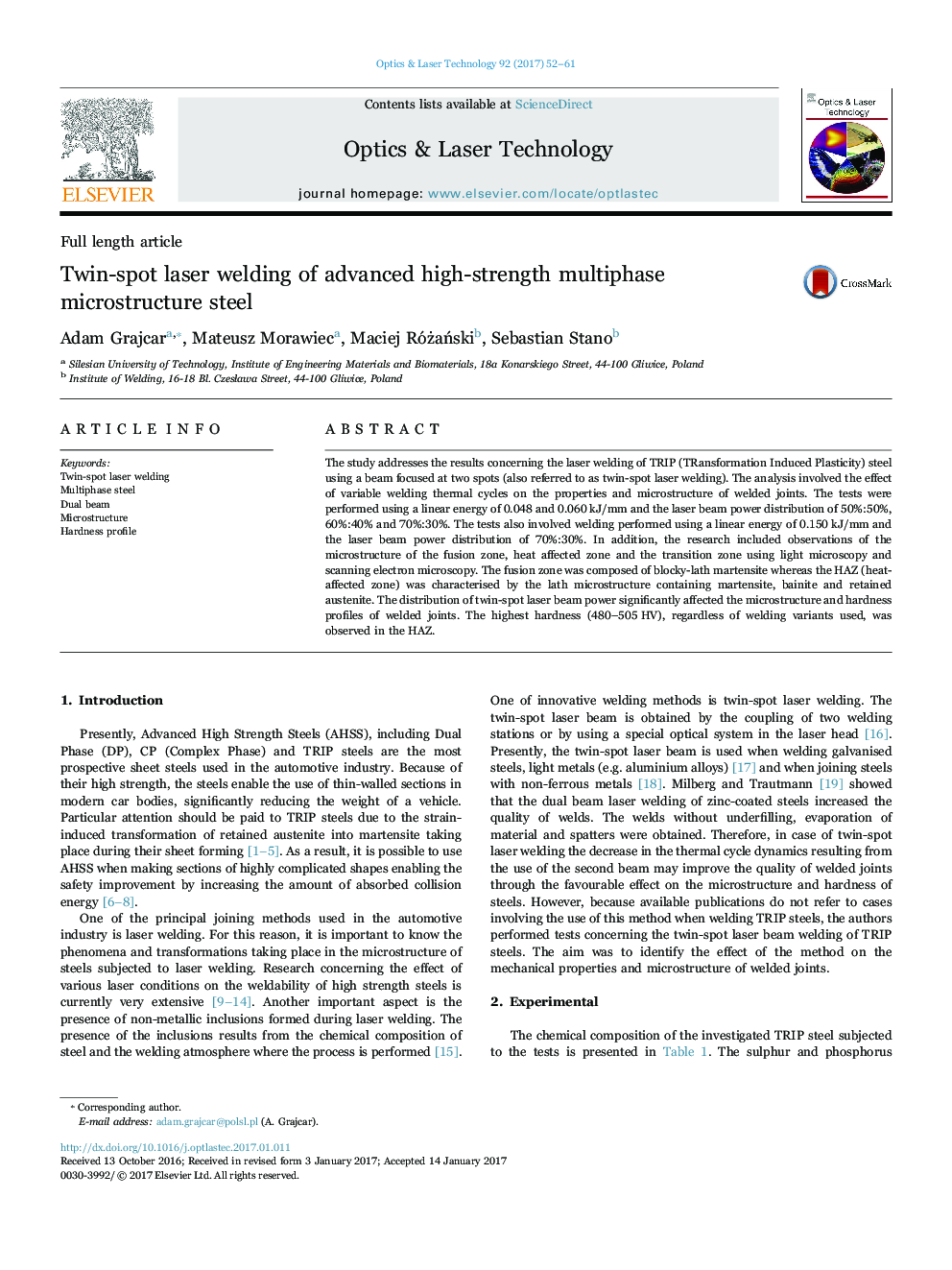| Article ID | Journal | Published Year | Pages | File Type |
|---|---|---|---|---|
| 5007430 | Optics & Laser Technology | 2017 | 10 Pages |
Abstract
The study addresses the results concerning the laser welding of TRIP (TRansformation Induced Plasticity) steel using a beam focused at two spots (also referred to as twin-spot laser welding). The analysis involved the effect of variable welding thermal cycles on the properties and microstructure of welded joints. The tests were performed using a linear energy of 0.048 and 0.060Â kJ/mm and the laser beam power distribution of 50%:50%, 60%:40% and 70%:30%. The tests also involved welding performed using a linear energy of 0.150Â kJ/mm and the laser beam power distribution of 70%:30%. In addition, the research included observations of the microstructure of the fusion zone, heat affected zone and the transition zone using light microscopy and scanning electron microscopy. The fusion zone was composed of blocky-lath martensite whereas the HAZ (heat-affected zone) was characterised by the lath microstructure containing martensite, bainite and retained austenite. The distribution of twin-spot laser beam power significantly affected the microstructure and hardness profiles of welded joints. The highest hardness (480-505Â HV), regardless of welding variants used, was observed in the HAZ.
Related Topics
Physical Sciences and Engineering
Engineering
Electrical and Electronic Engineering
Authors
Adam Grajcar, Mateusz Morawiec, Maciej RóżaÅski, Sebastian Stano,
